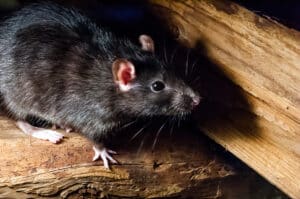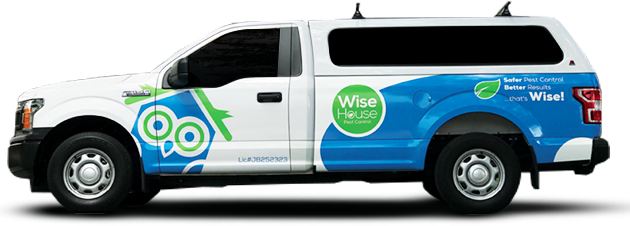Are you hearing scratching noises in your attic or have you discovered gnaw marks on your electrical wires? If you’re a resident of South Florida, these could be clear signs that Roof Rats, also known as Palm Rats, have set up shop in your home. These agile climbers are far more than just a nuisance. They’re a potential health hazard, capable of spreading diseases, contaminating food, and causing significant property damage.
In this post we will provide you with all the information you need to know about Roof Rats, how to identify their presence, as well as effective measures to keep them out of your home. Whether you’re already dealing with rodents or looking to prevent an infestation, the information in this post will help you maintain a rat-free home environment.

The Roof Rat (Rattus rattus), also known as the Palm Rat in South Florida, is a species of rodent known for its climbing abilities and preference for elevated nesting sites. These rodents are slightly smaller and more agile than Norway Rats, typically measuring about 6-8 inches in body length, with tails that are longer than their bodies. Their sleek, slender build, large ears, and pointed nose distinguish them from other types of rats.
Roof Rats are particularly prevalent in subtropical and coastal regions like South Florida where the warm climate and abundant vegetation provide ideal living conditions. They are often found nesting in attics, palm trees, and dense foliage. Unlike some rodents that prefer ground-level nesting sites, Roof Rats are expert climbers, frequently accessing homes through gaps in the roof or openings in the attic. They have a varied diet, consuming everything from fruits and vegetables to grains and small insects.
Identifying Roof Rats early is important for preventing an infestation. Here’s how you can recognize these pests:
Roof rats prefer warm climates and are commonly found in tropical and subtropical regions. However, they can also thrive in temperate areas, particularly in buildings with easy access to food and shelter. They are highly adaptable and often establish nests in elevated locations, including:
Roof rats are omnivorous and have a varied diet that includes fruits, nuts, seeds, vegetables, and grains. They are particularly fond of fruits and will often seek out gardens and orchards. In urban environments, they scavenge for food in garbage cans, pet food dishes, and bird feeders.
Roof rats have a high reproductive rate, making them a challenge to control once an infestation is established.
Roof rats are social animals that live in colonies, often consisting of several related females and their offspring.
Don’t be fooled by their size – roof rats are carriers of several diseases that can have serious consequences for human health. These include leptospirosis, a bacterial infection that can lead to kidney and liver damage, salmonellosis, a foodborne illness causing severe gastrointestinal distress, and rat-bite fever, which can trigger fever, vomiting, and even joint pain. They are also known to carry parasites like fleas and mites, which can further spread disease.
Preventing a Roof Rat infestation involves making your home less attractive to these pests. Here are some detailed strategies to help you safeguard your home:
Roof Rats can transmit diseases and carry parasites that spread other illnesses. They pose a serious risk to human and pet health.
Yes, they can chew through wiring (fire hazard!), damage insulation and wood, and contaminate food supplies. Addressing an infestation is crucial to protect your home and health.
Look for droppings, gnaw marks, grease trails, nests, or listen for scratching sounds in your attic or walls, especially at night.

Ready to send away pests without harming your pets? Getting started with Wise House Environmental Services is as easy as 1-2-3:
With Wise House Environmental Services, you get more than just effective pest control; you get peace of mind, knowing that your home is without pests and safer for your pets.
Our approach to pest control combines science with safety, offering you the kind of targeted, effective solutions that you won’t find with just any other pest control service. Our services have made a world of difference for homeowners, and we can do the same for you. Your pets will thank you for it!
We serve Port St. Lucie,Lake Worth, Boyton Beach, Palm Beachand the Treasure Coast.


© 2023 All Rights Reserved. | Sitemap